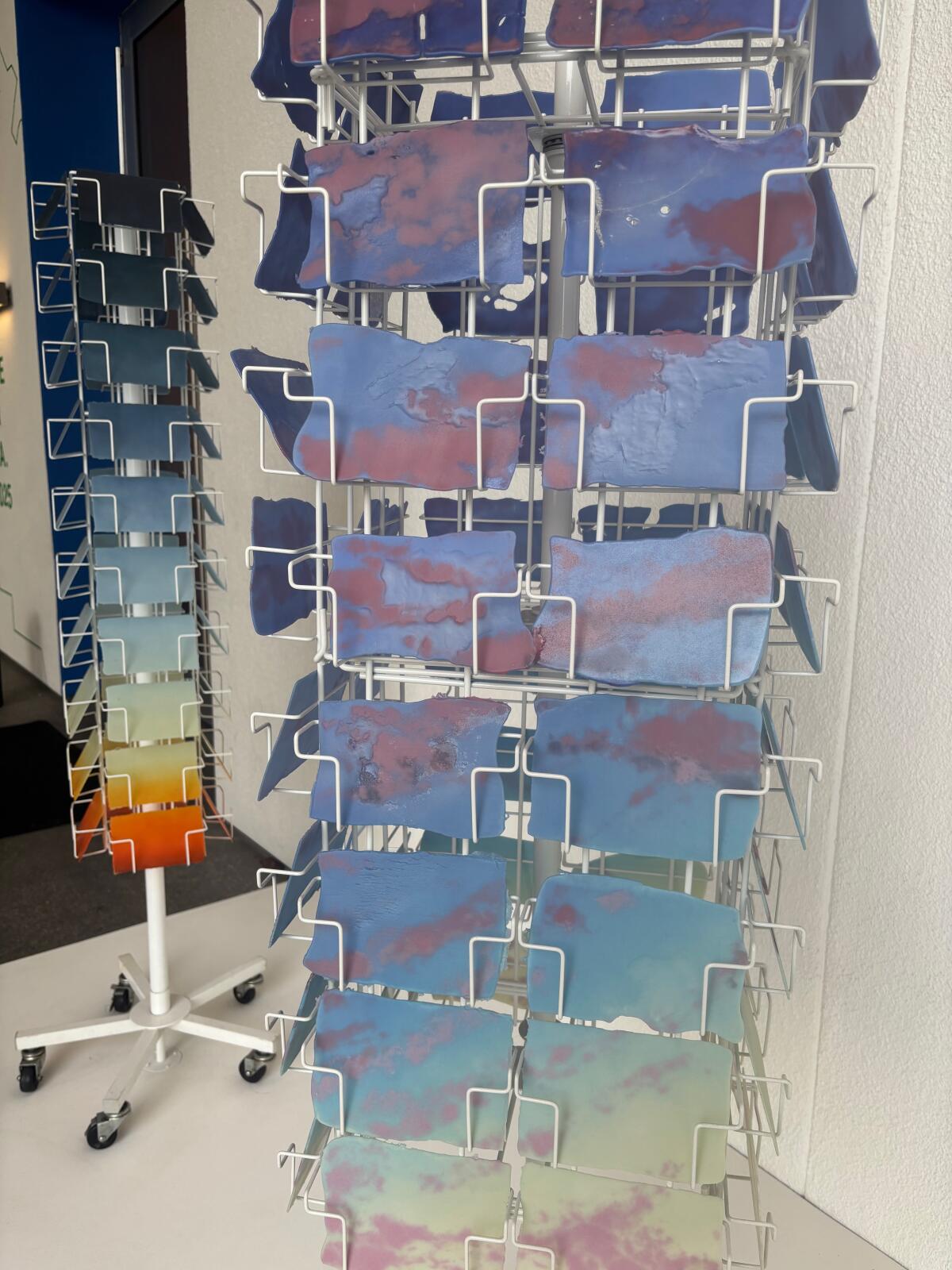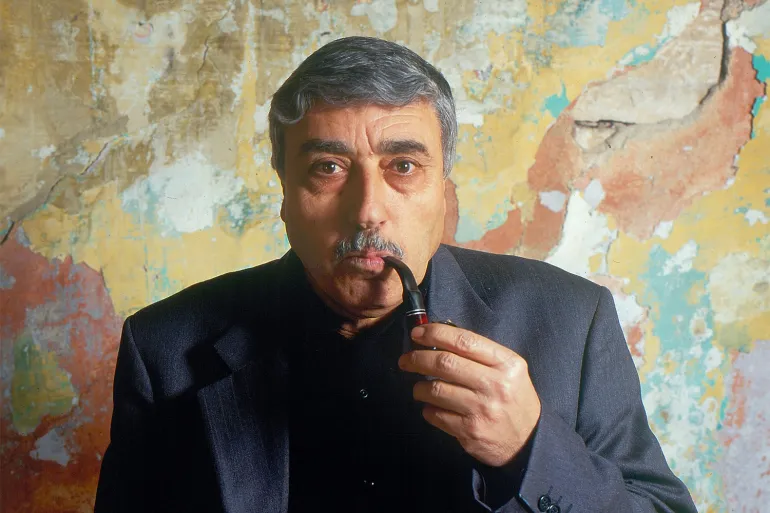How L.A. artists are processing the climate crisis
Before I moved to L.A., I’d spent pretty much my entire professional life working for New York-based publications. One of the primary reasons I decided to take this job and transfer my life to the West Coast was because it seemed to me that California was at both the spear point of climate risk and the cutting edge of climate adaptation.
I didn’t expect the peril of climate change to rear its heads as quickly, and as close to my new home, as it did when the January fires became one of the biggest stories in the nation just a month after I started at The Times. I was less surprised to see how widespread a sophisticated understanding of climate issues was at the publication — an expertise borne out by the exemplary coverage of the fires and their aftermath.
The same, I think, can be said for most of the people I know or have recently met who live in L.A.: There is very little sanguinity about what’s happening here, climate-wise, among Angelenos, regardless of where they work or come from.
So maybe I should have expected that an exhibit of recent work by L.A. artists would be similarly, logically, oriented toward these same (largely home-grown) anxieties around our place in a world increasingly shaped by the developing climate crisis.
Nevertheless, it struck me how many of the artists centered the interface between the built and “natural” environments at the Hammer Museum’s biennial “Made in L.A.” exhibition when I visited last weekend.
Many of the artists seemed to be grappling with how we situate ourselves in a climate-changed world.
From Alake Shilling’s uncanny cartoon bears driving buggies and mowing down weeping, humanoid sunflowers to Kelly Wall’s installation of glass swatches painted the color of toxic L.A. sunsets displayed, for tourist consumption, on an erstwhile pharmacy rack, the exhibition communicates Los Angeles as a place of largely unresolved conflict between human beings and whatever we define as “nature.”

Part of Kelly Wall’s installation, “Something to Write Home About.”
(Elijah Wolfson / Los Angeles Times)
I thought that as a climate journalist, I might just be primed to see such things, but Essence Harden, who co-curated the biennial, noted that “concerns around the environment are historical, they’re rooted. They’re not ahistorical. They don’t come from nothing or nowhere. I think art produced in Los Angeles has a relationship to the site specificity and the dynamic of architecture and history which grounds it.”
Harden said that she and her co-curator, Paulina Pobocha, didn’t seek out artists grappling with climate specifically for the seventh edition of Made in L.A. But after scouring dozens of local galleries, they found that climate and environmental anxieties permeated the scene.
Much of this Anthropocene-angst is “rooted in a sort of longer history of capital,” Harden said. Indeed, as a relative outsider, I have always sort of felt that L.A. wears its supposed climate excellence a little too loudly on its sleeves — or maybe, on its postcards and souvenir T-shirts. The iconic palm trees, for example, are transplants, forced to live in neighborhoods that don’t want them.
“The idyllic palm trees sight line of Los Angeles comes from these neighborhoods that were historically Black and Japanese and Latinx,” Harden said. “They are rooted in these places that people who are buying the product of Los Angeles don’t want to go.”
There are no palm trees in the Hammer biennial. At least, none that I remember. What there are instead are painted cinder blocks and hunks of glass, graffiti and rutted acrylic paint, twisted tubes of neon and roughly formed clay.

Anthropocene Landscape 3 by Carl Cheng
(Hammer Museum)
It was refreshing to see a show that grappled with the environment but was not didactic. Describing her curatorial process, Harden said she is mostly attracted to “people who are more ethereal and capture dreams and sensation.” If they also happen to be engaging with climate change, all the better.
More recent news and ideas on climate and culture
Writing for The Guardian, Beth Mead — a star forward on England‘s national soccer team for nearly a decade, with the all-time most assists in the history of the Women’s Super League — shared how climate change has changed the game she loves over the last decade. For professionals on her level, yes, but more importantly, for the many kids around the world who are now less likely to be able to regularly play what she calls “the world’s most accessible sport” thanks to extreme heat, droughts and flooding.
A “milk apocalypse” is coming for your burrata, reports Motoko Rich for the New York Times. Cheesemakers and dairy farmers in Italy, which produces and exports some of the most popular cheeses in the world, report a declining supply of milk, thanks to rising temperatures.
And if you wanted to pair your favorite Oregon pinot with that cheese … well, better do it now. The Willamette Valley has long had a nearly perfect climate for growing pinot noir — to the point where “Oregon wine” is often shorthand for the varietal. But as Branden Andersen reports for the local outlet Newsberg, thanks to changes in temperature and humidity, the region may need to rethink what’s been practically a vineyard monoculture.
In Belém, Brazil, COP30 is coming to a close. I’ve always been drawn to the art and performance at past COPs, and was glad to see some examples from this year’s climate conference. But what was even more interesting to me was Spanish artist Josep Piñol’s performance piece, in which he was commissioned to produce a large-scale sculpture in Belém and then canceled, saving what he said would have been the emissions equivalent of 57,765 metric tons of carbon dioxide.
The past week in broader climate news
Melody Gutierrez has been in Belém reporting on COP30 for The Times, and this week, she wrote about an image that has come to represent the socio-economics of this year’s events: two gigantic diesel-powered cruise ships, used as temporary housing for the global elite that comprise much of the COP delegations, docked at the mouth of the Amazon River, whose rainforests and people have felt much of the brunt of fossil fuel-driven climate change.
Meanwhile, the California Air Resources Board is expected to vote today on new measures to address methane leaks and underground fires at landfills which — unsurprisingly — are more likely to impact poorer Californians. As my colleague Tony Briscoe reports, landfills are a climate change and environmental health menace, and updates to the rules governing California’s are long overdue.
Earlier this week, a U.S. appeals court put a hold on a California law set to go into effect in January that would require any company that makes more than $500 million annually and does business in the state to report, every two years, the financial impact of climate change.
Finally, there was a lot of talk this week about how the build-out of data centers is driving up energy costs across the U.S. I found this Pew Research article to be a useful one-sheet to get a feel for what we know to be real when it comes to AI’s impact on the energy sector, what is hyperbole and what we still don’t fully understand.
This is the latest edition of Boiling Point, a newsletter about climate change and the environment in the American West. Sign up here to get it in your inbox. And listen to our Boiling Point podcast here.












